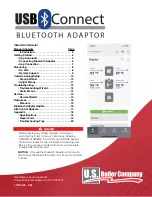
Host-Driven Synchronization
Host-driven synchronization allows you to perform the following actions:
•
Decouple the Sample Clock and the Reference Clock
•
Use an external Sample Clock
•
Set the CPTR period manually
Host-driven synchronization requires an additional FPGA I/O line and host involvement for
CPTR alignment.
Note
Host-driven synchronization is repeatable only if the phase relationships
between devices remain constant.
Host-driven synchronization guarantees that the maximum phase offset between the master
and slave device is one-half of a Sample Clock period. The phase offset approaches zero as the
phase relationships between the devices approach zero.
Note
The phase relationship between the device and the Reference Clock does not
affect host-driven synchronization.
Synchronization Example
You can find examples of both FPGA code and host code for synchronization at
<labview>
\examples\instr\ni579x\Streaming
.
How Synchronization Works
When you share triggers between multiple devices, propagation delays on the signal path
cause the trigger to arrive at different times on each device. The synchronization library uses
the CPTR to slow down the trigger evaluation rate. All devices must produce a CPTR signal
that is equal in frequency and phase-aligned.
The synchronization FPGA VIs produce and align a CPTR that occurs simultaneously across
all the FPGAs. The CPTR is periodic, and the Sample Clock rate controls the CPTR period.
When you power on the FPGAs, the CPTRs are not aligned. The alignment FPGA VI and the
host VI align the CPTRs. The following figure shows the relationship between the CPTRs, the
Reference Clock, and the Sample Clock.
Figure 7. CPTR Alignment
Reference Clock
CPTR Device B
CPTR Device A
Sample Clock
Note
Lock Device A and Device B to a common clock.
Once the CPTRs are aligned, synchronize an edge across multiple FPGAs. The master device
distributes the signal across an FPGA I/O line. All devices monitor the same FPGA I/O line.
NI 5791R User Manual and Specifications | © National Instruments | 19
















































